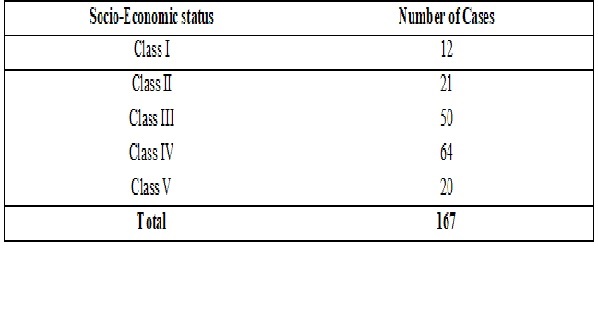Prevalence of nutritional anaemia in Pediatric age group a cross sectional study
Abstract
Introduction: The term ‘nutritional anaemia’ encompasses all pathological conditions in which the blood hemoglobin concentration drops to an abnormally low level, due to a deficiency in one or several nutrients. The main nutrients involved in the synthesis of hemoglobin are iron, folic acid, and vitamin B12.
Objective: To study the prevalence of nutritional anaemia in paediatric age group.
Methodology: A cross sectional study was undertaken in children with nutritional anaemia attending department of paediatrics, tertiary care hospital, Bangalore during the period January 2016 to December 2016.
Results: Out of the 167 children studied, 86 children belonged to the age group of 6 year to 14 year and 59 children belong to 6 month to 6 year age group and 22 children belongs to 14 year to 18 year age group. Majority were males and accounted for 88 of the subjects with females accounting for 79. Majority (64 cases) belonged to class iv (upper lower), with 50 cases belonging to class iii (lower middle) socio-economic status according to modified kuppuswamy classification. Majority were vegetarians constituting 101 cases and the rest 66 cases belong to non-vegetarians.
Conclusion: Anaemia needs to be immediately attended to. Strategies and documents endorse this need. WHO / UNICEF / UNU strongly advocate that when there is a prevalence of anaemia above 40%, a universal supplementation is required and it is not cost-effective to screen children for anaemia.
Downloads
References
2. Argano BJ. Phonocardiographic findings in anemia. Chest. 1971 Dec;60(6):599-601.[pubmed]
3. Cook JD, Lynch SR. The liabilities of iron deficiency. Blood. 1986 Oct;68(4):803-9.[pubmed]
4. Bessman JD, Feinstein DI. Quantitative anisocytosis as a discriminant between iron deficiency and thalassemia minor. Blood. 1979 Feb;53(2):288-93.[pubmed]
5. Conrad ME, Crosby WH. The natural history of iron deficiency induced by phlebotomy. Blood. 1962 Aug;20:173-85.[pubmed]
6. Rachana B, Uma I. Magnitude of Malnutrition and Iron Deficiency Anemia among Rural School Children: An Appraisal ASIAN J. EXP. BIOL. SCI-2011;2(2):34-6.
7. Sudha GB, Sivapatnam S, Ebenezer WE, Prema A. Prevalence of anemia in the school children of Kattankulathur, Tamil Nadu, India. www.ijnpnd.com/article.asp?issn=2231-0738;year=2011.
8. Calis JC, Phiri KS, Faragher EB, et al. Severe anemia in Malawian children. N Engl J Med. 2008 Feb 28;358(9):888-99. doi: 10.1056/NEJMoa072727.[pubmed]
9. National Family Health Survey for India conducted by. Mumbai, India: International Institute for Population Science. N.F.H.S: 3rd ed; 2006.
10. National Family Health Survey for India conducted by. Mumbay, India: International Institute for Population Science. N.F.H.S: 2nd ed; 1999.
11. Vijayaraghavan K, Brahmam GN, Nair KM, et al. Evaluation of national nutritional anemia prophylaxis programme. Indian J Pediatr. 1990;57(2):183-90.[pubmed]
12. Community studies using common salt fortified with Iron. Annual report. Hyderabad: National Institute of Nutrition. 2nd ed; 1978.
13. Rao KV, Radhaiah G, Raju SV. Association of growth status and the prevalence of anaemia in preschool children. Indian J Med Res. 1980 Feb;71:237-46.[pubmed]
14. Singla PN, Gupta HP, Ahuja C, et al. Deficiency anaemias in preschool children--estimation of prevalence based on response to haematinic supplementation. J Trop Pediatr. 1982 Apr;28(2):77-80.
15. National Nutrition Monitoring Bureau: Prevalence of Micronutrient Deficiencies: NNMB Technical Report No. 22, National Institute of Nutrition;2003.
16. Kotecha IS, Kotecha PV. Prevalence of Iron-deficiency anemia in children 6-35 months of age in urban slum areas served by 0 integrated child development service project in Vadodara city: Department of Preventive and Social Medicine, Medical College Vadodara;2005.

Copyright (c) 2019 Author (s). Published by Siddharth Health Research and Social Welfare Society

This work is licensed under a Creative Commons Attribution 4.0 International License.


 OAI - Open Archives Initiative
OAI - Open Archives Initiative


